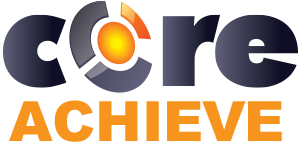Mixing Psychology of Behavioral Learning and eLearning
February, 17 2023
Other posts:
Enhancing Team Dynamics for Effective Group Decision-Making with LMS Integration
Organizations increasingly rely on collaborative efforts to solve complex problems, innovate, and adapt to change, but how do we ensure that collaboration is happening.
Maximizing Small Business Potential with Training Technology
Training technologies can push small businesses ahead of their competitors, but what are the factors that go into choosing the right technology?
Unlocking Employee Potential: The Transformative Benefits of an Interactive Learning Management System (LMS)
Interactive training allows for unlocking employee potential, but how is it done?
Building a Robust Sales Pipeline with Training
Every organization wants a streamlined sales pipeline, but building one requires a series of interlocking activities with one of the most important being training.
Strategies for Adapting In-Person Training to Online Platforms
Online training is one of the most flexible ways of delivering training across organizations, but how do you even begin to adapt in-person training into online?
Can behavioral learning boost the effectiveness of your training? Implementing psychological principles into your eLearning can be tricky, after all, most of these principles were discovered, tested, and refined in physical settings.
What is Behavioral Learning Theory?
This theory isn’t about the mechanics of how the brain learns, rather, behavioral learning theory is about how to promote behaviors for learning. For example, behavioral learning argues that learners should be rewarded for their productive actions because that positive reinforcement will encourage those actions again. At the heart of behavioral learning, there are two key techniques: positive reinforcement and repetition.
Positive Reinforcement
The word positive is essential, as the connection learners make between their actions and that positive reinforcement is much more effective than connections made through negative reinforcement. If a learner is given no positive reinforcement, then they are likely to stop doing correct action because they are getting no results.
Now positive reinforcement can be tricky to pin down for individuals. After all, some learners will just find the challenge of passing to be enough motivation for them. Others, however, may need more explicit rewards to even attempt to change.
Repetition
Repetition is a key to learning regardless, but in terms of behavioral learning theory, repetition is linked with positive reinforcement. If repetition isn’t used with positive reinforcement, then there is no possibility for the learner to connect their actions to that reinforcement. Worse, if positive reinforcement is given with repetition, then when that reinforcement is taken away learners will often change their actions as they search for new actions to find what is expected of them.
Three Key Types of Behavioral Learning
Classical Conditioning
Classical conditioning is perhaps the most well-known (even if it’s not by its name) of behavioral learning. Whenever a naturally occurring stimulus, classical conditioning states, is repeatedly paired with an environmental stimulus, the environmental stimulus eventually triggers the same response of the natural stimulus. This may sound a bit complicated at first, but just think of the most popular example of classical conditioning: dogs.
Training a dog is the most basic example of classical conditioning. You give the dog a treat (food, a naturally occurring positive stimulus) for doing an action you want to encourage (environmental stimulus). Eventually, the dog will continue doing the action despite not getting any food because they now associate those two things. People aren’t above this (yet it would be demeaning to give people treats every time), we typically just have stronger, immaterial motives. The feeling like part of a group is an example of when people will often modify their behavior.
Operant Conditioning
Operant conditioning may be the easiest to understand, it refers to the method of teaching by rewarding the desired behavior with positive reinforcement and the undesired behavior with negative reinforcement. It is called operant conditioning as “operant” refers to actions that we can control, which means the response we get for these actions can sway whether we do those actions in the future.
Observational Learning
Observational learning is the most common behavioral learning method used in eLearning, namely through storytelling. How observational learning works is by watching someone else do something and then replicating those actions later. Whenever we use the story of another person learning or who exemplifies the lesson, we are using observational learning.
How Do We Use Behavioral Learning in eLearning
Looking back on the three major components of behavioral learning, classical/operant conditioning and observational learning, it can be difficult to see how the former two can be implemented into eLearning. They still can be but might be tricky depending on your organization. For example, observational learning can be a simple story about what someone should do in each situation; however, classical and operant conditioning both depend on reward or punishment mechanism that varies impact.
The Problem with Classical and Operant Conditioning
The biggest issue that you’ll have with any learning models that uses punishments or rewards as both are subjective. The most effective award for one person could do nothing to motivate someone else and it’s the same with punishments.
What Should You Do to Include Behavioral Learning?
The easiest way is by including character-driven storytelling, which will be equivalent to observational learning. For the other two, however, don’t try to force them into your learning routine. Some learners may be motivated by the cause, the challenge, or pay while some might not be motivated at all. You could reward people who work hard by setting up a raffle for top performers or something similar.
Get started with CoreAchieve for free.
Photo by Mirko Fabian on Unsplash

Leave comment: